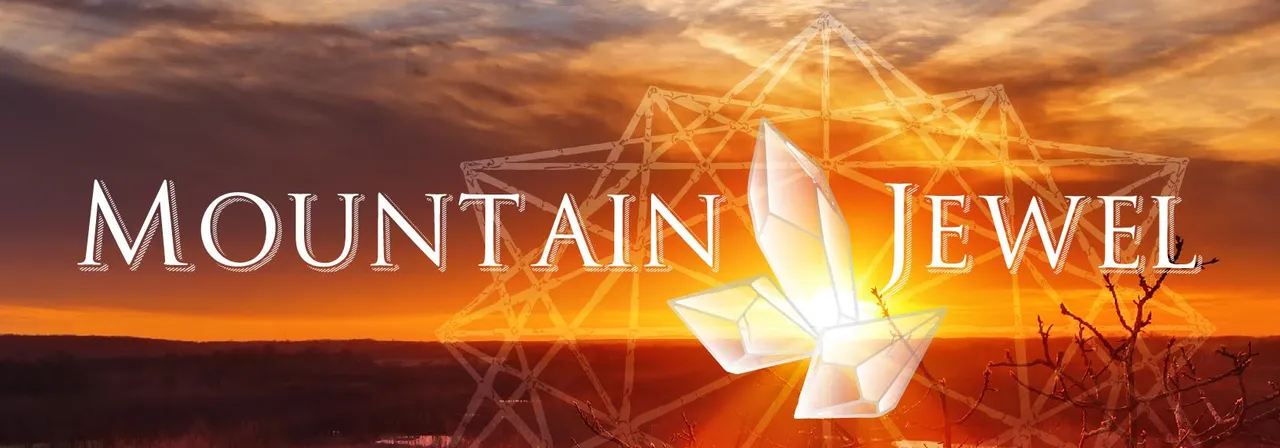Project Giving's primary aims are to raise funds for causes or initiatives in need. Secondarily, our wider goal is simply trying to create exposure and encourage adoption of the UN Sustainable Development Goals throughout the Steemit platform.
To this end, we're excited to announce a new Sustainability series created by @mountainjewel centered on the 12 Permaculture Principles.
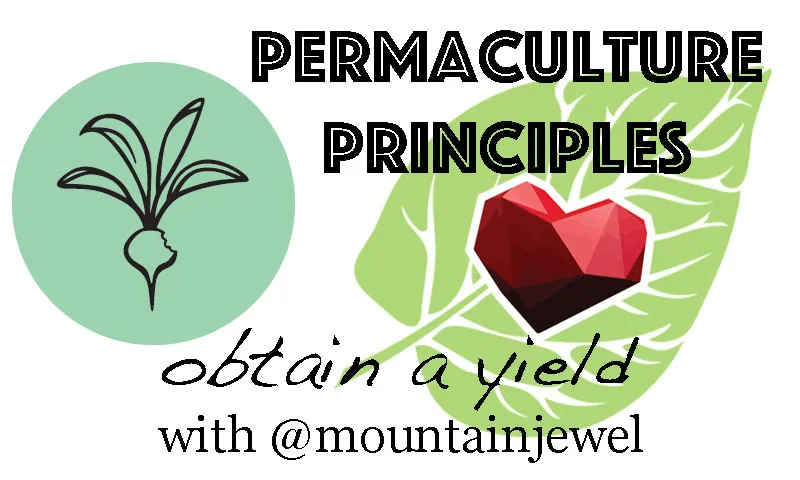
Permaculture is a series of ethics and design principles geared toward helping humans create permanent cultures (hence the name) in harmony with nature's systems, instead of exploiting, destroying or making inefficient systems that require lots of resources to prop up. It can be growing food, building shelter, energy usage, political organization and more.
Through sharing these 12 Principles along with @mountajewel's Radio Show on each principle (which can be found on the Global Homesteading Network's Discord Channel every Tuesday from 4-5 pm EST), we hope to engage Steemians in conversations around sustainability in practical and theoretical ways. Whether you live in a city in an apartment or a small rural community, it is our aim to share ways each of us can be rethinking our connection with the earth.
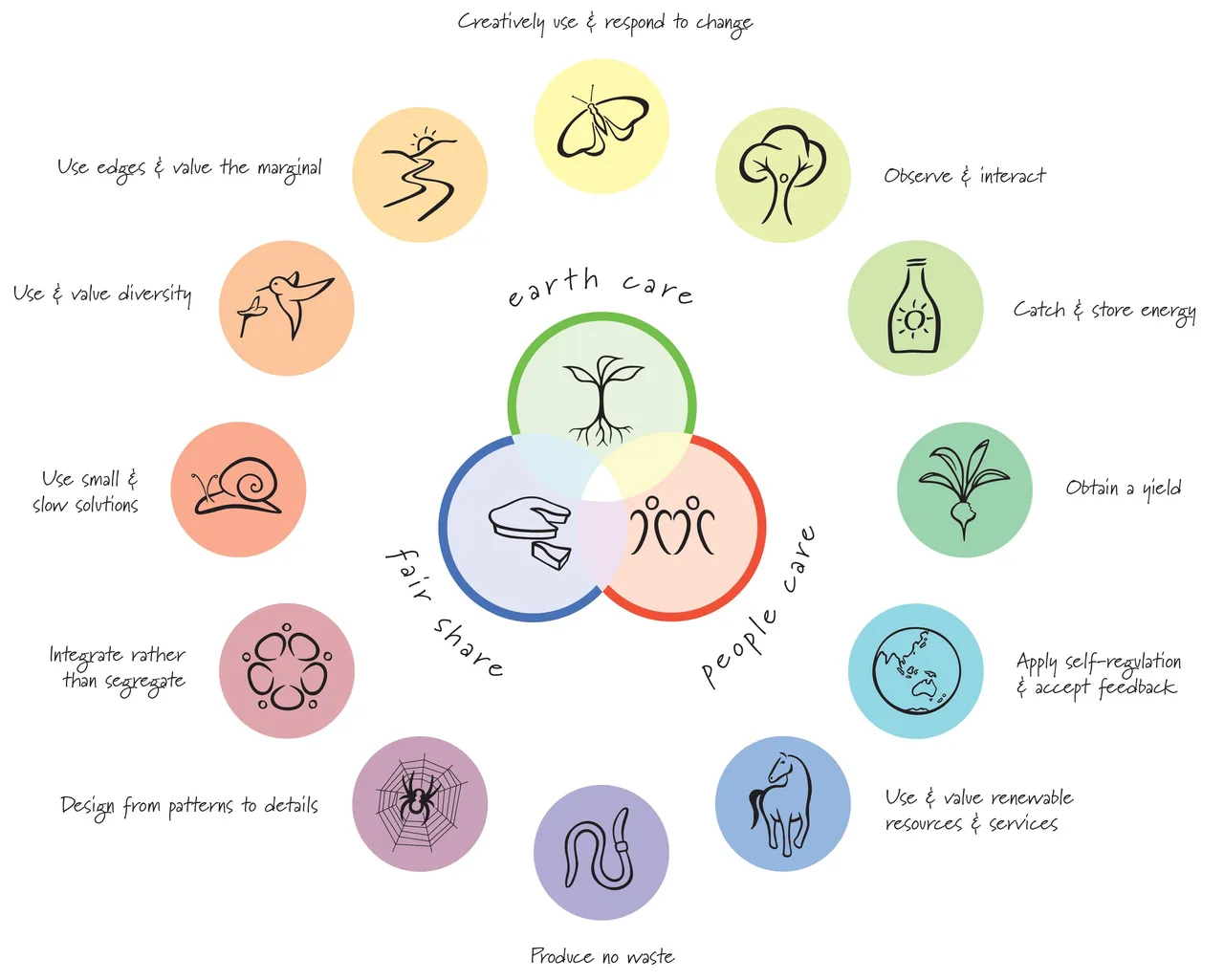
These principles provide a framework for ways we can be more conscious in relationship with each other and natural systems!

Without further ado, we introduce the first of 12 Permaculture Principles,
Obtain A Yield
Obtain a Yield: You can't work on an empty stomach
An image of a beet with a bite taken out of it.
Just as a business can't always operate "in the red", we as designers need to be getting rewards from our actions, the subtitle of "you can't work on an empty stomach" is a great reminder that we need fuel to keep going.
Today's show focused on what we are getting from our actions and systems. This can often be achieved if we get creative and think of yield opportunities everywhere. As designers this means we must receive something from our efforts be it food, money, useful items or services.
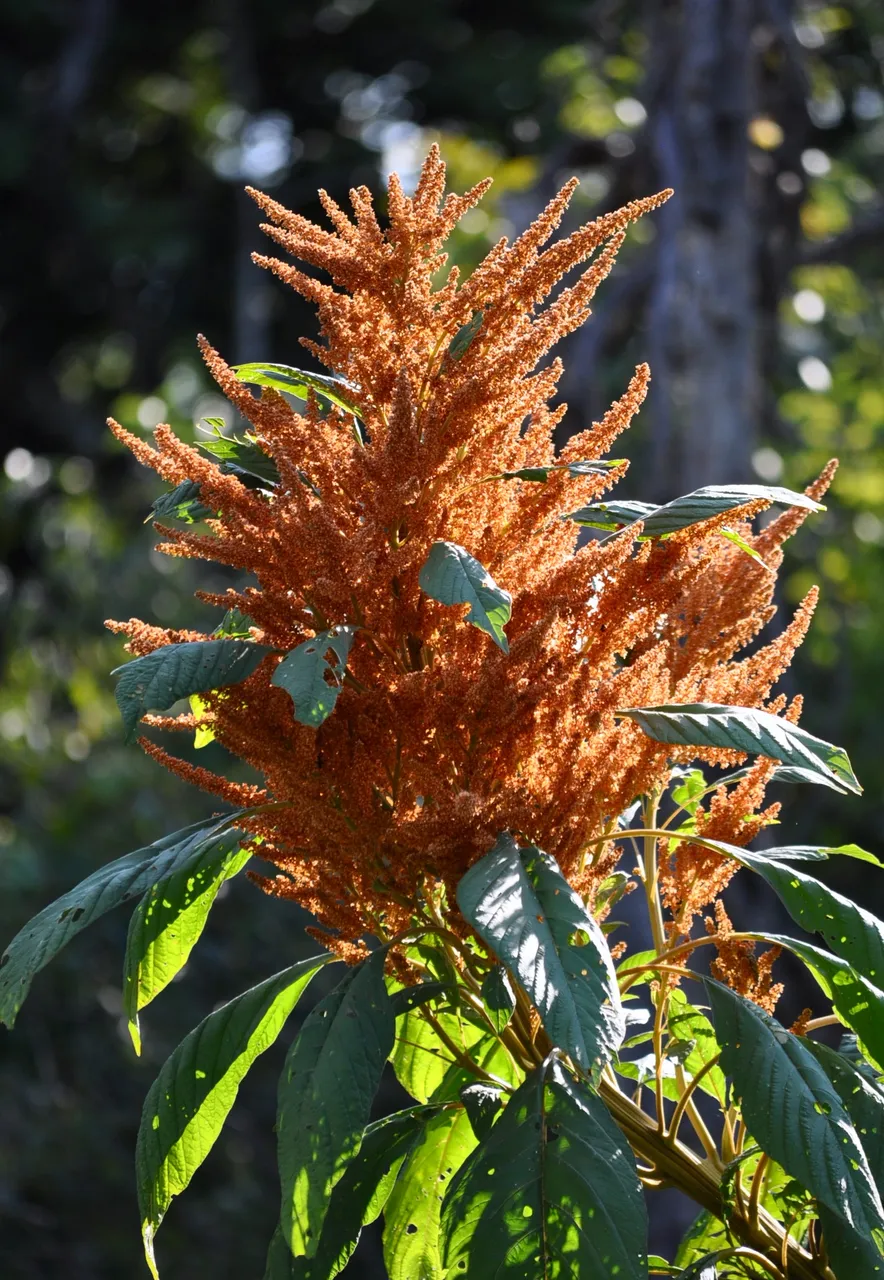
Golden Amaranth, a vigorous re-seeding annual. Seeds (eaten like quinoa or cooked in breads) & greens are edible.
The classic example of the permaculture chicken.
By paying attention to the natural order of things, we can effectively set up systems that are functionally interconnected. The more we take into consideration what we have learned from our observations, the more we'll understand the potential yields of our landscape. Take for example the interconnected offerings of a chicken.
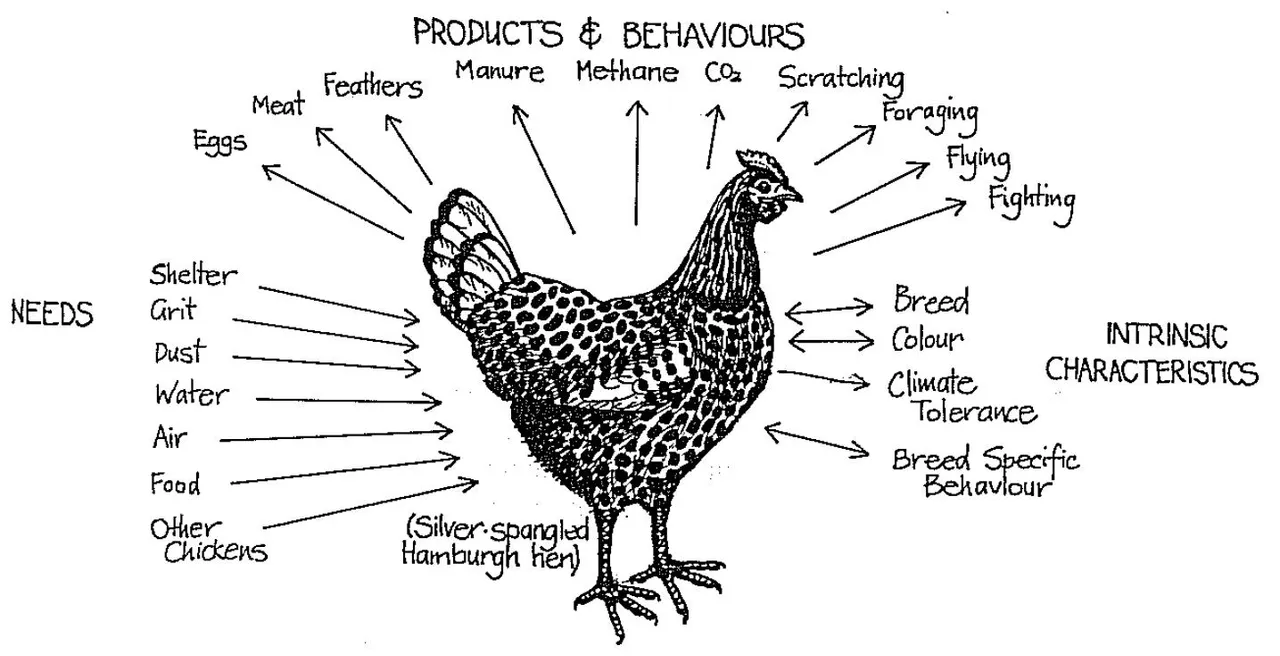
source
Functional interconnectedness means that elements in the system interact with one another both taking and receiving. In the image above we see the products and behaviors, needs and yields, of a chicken within a system. In using this information, we can combine elements of the design to ensure that countless yields are being achieved, while also providing a good life for the chicken. The yield of manure and scratching is a natural output of the chicken and by containing chickens in an area we benefit from their natural activity of scratching and pooping.
Observation and Understanding Increases Yields
One way we implement this on our homestead is by feeding our chickens sunflower seeds in a moveable coop. As we move them every day, they miss some of the seeds and the uneaten seeds soon sprout up after we move them. These seeds, once grown into mature sunflowers, provide nectar and pollen for our honeybees and other native pollinators while also creating habitat for parasitic wasps. These wasps can prey upon pests such as aphids. This is a multi-tiered yield that was not even intentional on our part in the beginning! We also use them as bean trellises and enjoy seeing goldfinches and other birds visit the mature heads while offering another yield in the form of their manure. They're also beautiful to behold in the landscape!
We are always learning more about how to maximize yields. A large part of this is simply getting to know the elements in our systems.
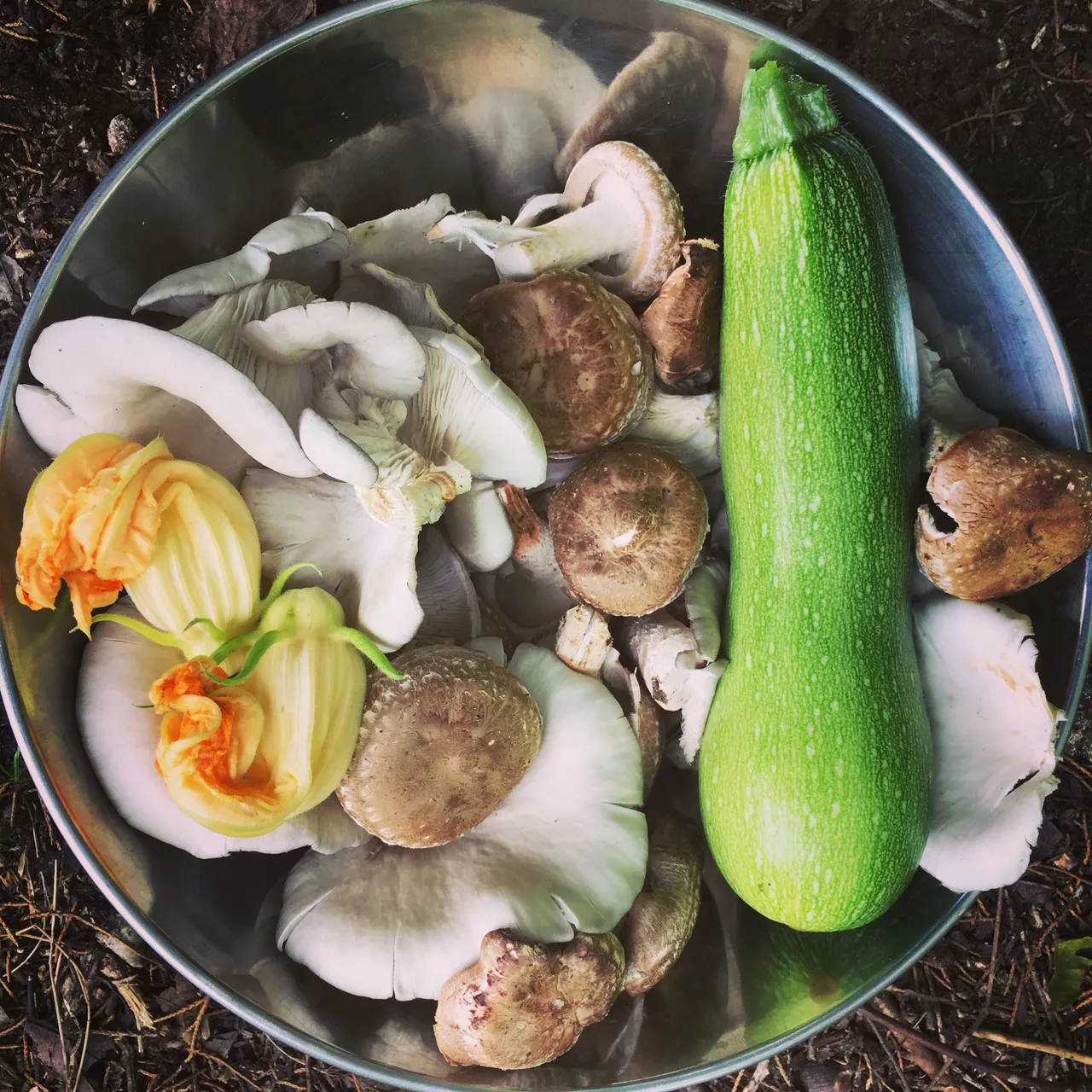
Today's harvest of shiitake mushrooms that we inoculated in oak logs 15 months ago (long term planning), annually grown zucchini and oyster mushrooms (a "waste stream resource" from a local organic mushroom business- short term yield without much planning). This demonstrates the principle because as we are waiting for our shiitakes, we have the ready yield of oyster mushrooms and in this way keep our bellies filled while thinking and planning for the future. Permaculture as a design system encourages us to look at both Now and the Future and plan for both sets of needs.
"The yield of a system is theoretically unlimited, or, limited only by the information and imagination of the designer."
Bill Mollison (co-founder of permaculture)
Growing Annuals is a fantastic way to take care of our Present Needs
Much of our focus is placed on perennial crops that may take many years to reach fruiting capacity.
While we're waiting for these to produce, we're hungry and need to grow annuals (crops that reach completion withina season.) We focus on easy to grow, storable and hardy crops like sunchokes (aka Jerusalem artichokes), greens and other vegetables, and potatoes to meet our needs while waiting for our trees, vines and shrubs to begin producing. We need to be feeding our bodies as we do the work of establishing a long term food system. Like a business cannot survive if it's not bringing in a profit, there is no point on being too focused on meeting our long term needs if our short terms needs aren't met.
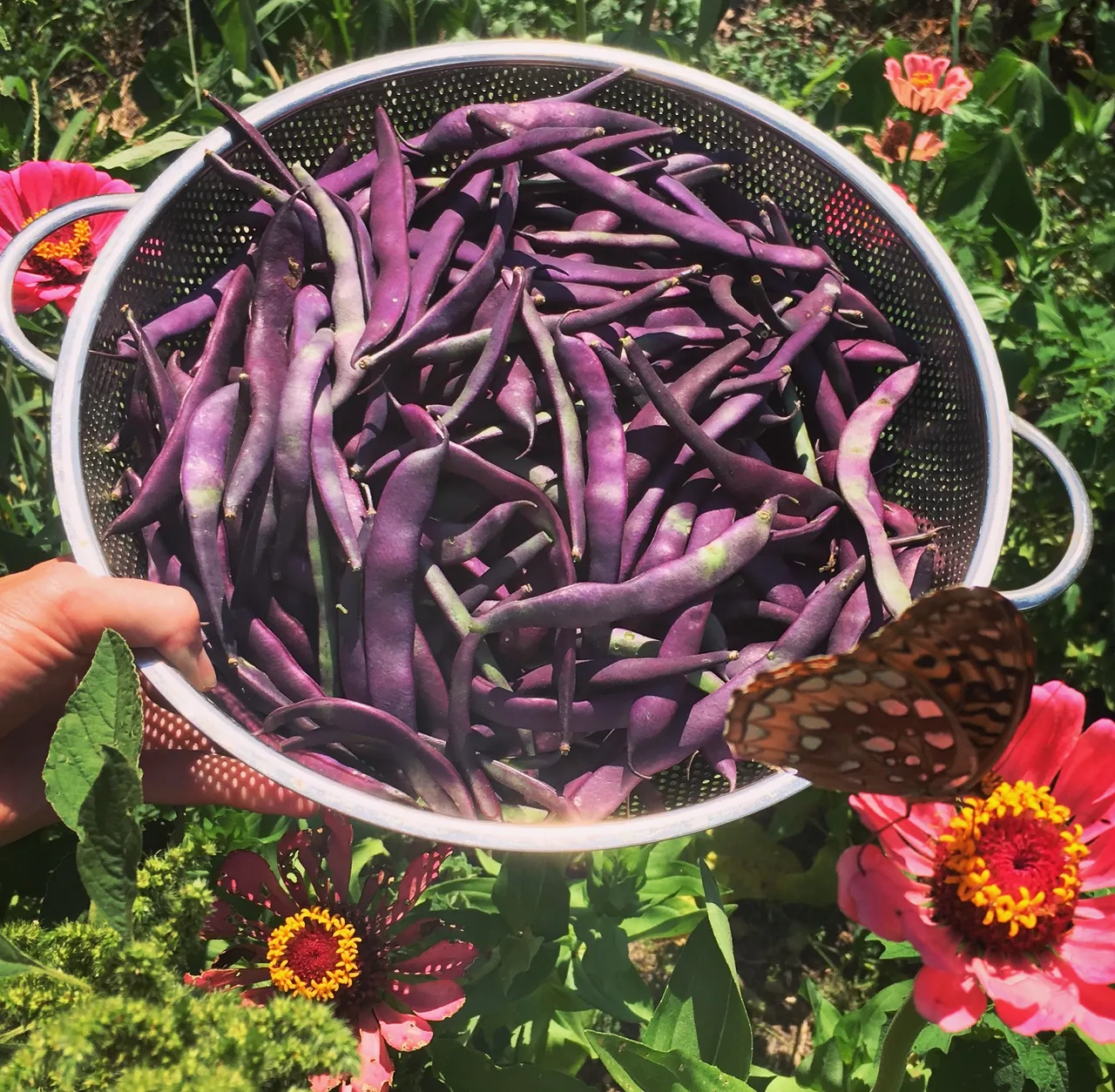
Purple Podded Pole Beans are an excellent annual crop with heavy, beautiful and healthy yields!
Creative Design = expanding the potential of our yields
It is of benefit to our entire design system if we are open to adaptation. As designers, we are capable of forethought, reflection and observation. This boosts our creativity! We can anticipate potential yields and build that into a system as we learn more of the details of that system. We can always consider how to connect inputs and outputs for more holistic and resilient systems.
Is Waste a Yield?
Rethinking Waste Streams
A common waste which is disposed of to "away" is our human poop, also known as humanure. By safely managing this output, we can obtain a yield of fertility to feed trees and shrubs in the future (usually in 2 years time). Instead of polluting prodigious amounts of water, we can capture a yield in the form of fertility that closes the loop of our systems. Fertility inputs are a necessary part of any garden and we can meet this need on our own without reaching outside of our system.
Possibilities are Endless!
In natural ecosystems, there is no such things as waste.
All outputs flow into inputs for other things in the system. Have you ever see wild beings in the forest raking leaves? Of course not! The leaves are a yield in organic matter and a necessary component of forest health. Trees drop leaves that become soil which in turn feeds the trees. We can take a lesson from this example.

Amorpha fruticosa or False Indigo Bush, one of our beloved polyculture perennials that fixes nitrogen and acts as a "chop & drop" plant (creating biomass/mulch), and looks beautiful on the landscape. It is also a pollinator habitat.
Stay curious and take only what you need!
It's benefits the whole when we stay curious! Living in a sustainable manner means aligning with our abundant creativity as humans. Obtaining a yield is about taking what you need and not more. Greed inhibits this element and if humans acted in accordance with this attitude, there would be more than enough for everyone.
Get creative and brainstorm to come up with untapped yields in your life!
Whether food, fibers, medicine or fuels, dyes, insecticides, beauty, information, etc... It's up to us to get creative!
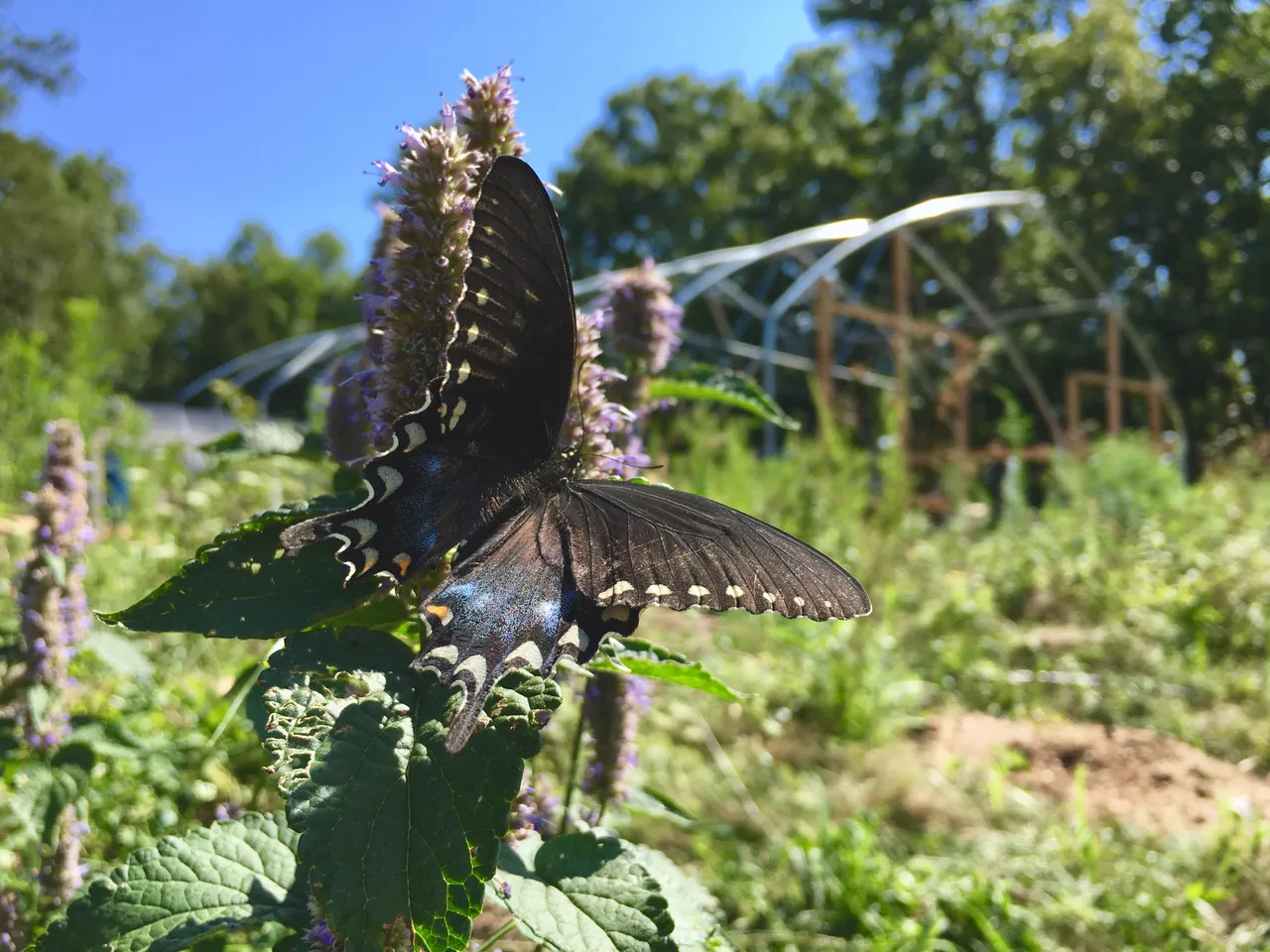
Don't forget Beauty! It is a yield in and of itself. In the case of flowers and vegetables or even fruit trees, they also have the benefit of adding pollinator habitats to the landscape! Pictured here: Anise hyssop & butterfly.
Join us next week for Self Regulate and Accept Feedback

@mountainjewel is a homesteading couple who live in the United States and practice permaculture on 18 acres. Check out their Steemit page for more writings on sustainability and permaculture. Portions of this article previously appeared on their page.
